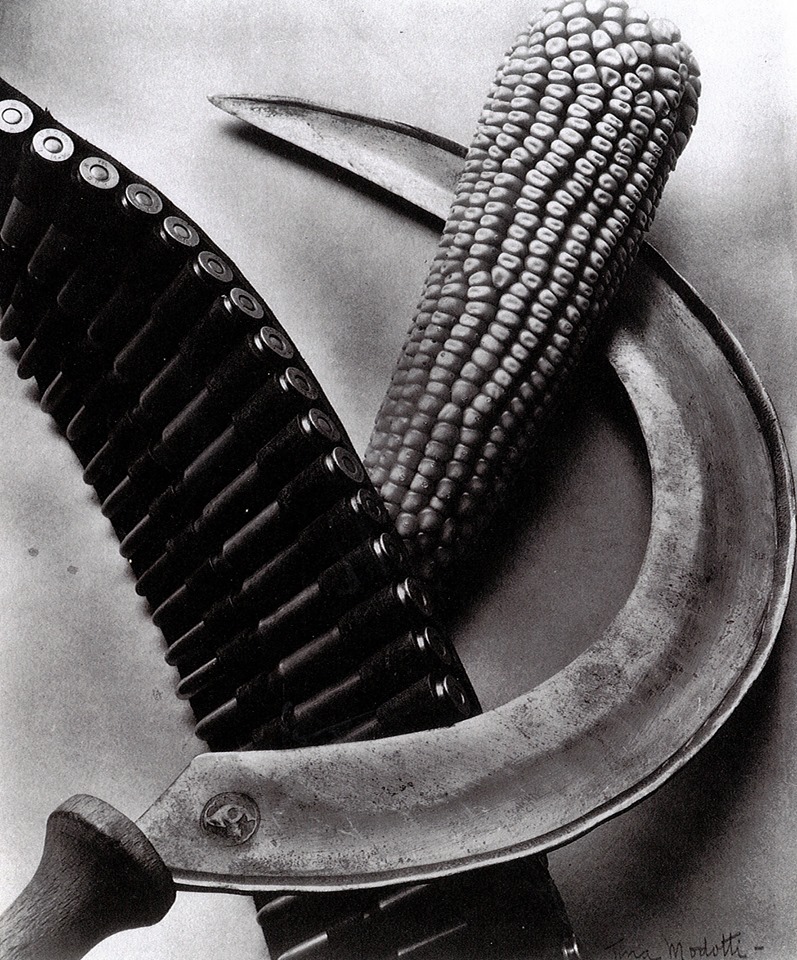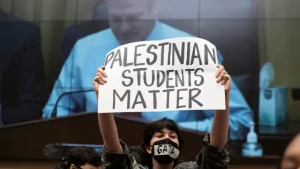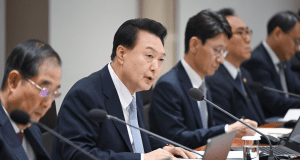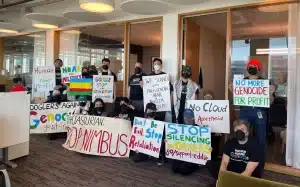In March 2019, the International Socialist Organization (ISO), one of the largest organizations of the revolutionary left in the U.S. with nearly 900 members, entered a terminal crisis. A comrade who had left the organization years earlier revealed the historic leadership’s malicious mishandling of a case of sexual assault in 2013. The release of the information took place soon after the ISO’s 2019 convention, which had been the most contentious of the organization’s entire history. The subsequent vote to dissolve the organization by its remaining members left many on the rest of the left confused, with varying interpretations and perspectives. To explain the events which led to the ISO’s dissolution and the formation of Central Ohio Revolutionary Socialists (CORS), I will offer a chronological summary of the ISO’s final months.
The lead-up to the 2019 ISO convention was characterized by intense debates along a number of lines. Each year, every branch of the ISO would send delegates to the National Convention, formally the highest decision-making body of the group. These delegates would discuss, debate, and decide the organization’s trajectory for the coming year. Additionally, each convention elected the Steering Committee (SC), the National Committee (NC) and the National Disciplinary Committee (NDC). The SC functioned as the day-to-day decision-making body of the national organization and was de facto the highest leadership body between conventions. The NC was a broader committee comprised of comparatively newer leaders who met less regularly to play an advisory role to the SC. Finally, the NDC was a technically independent body which existed to hear complaints lodged against ISO members and determine if disciplinary action would be necessary.
You might be interested in We Need More Leninism, Not Less
Unfortunately, the paper structure of the ISO’s national leadership was different than in practice. While formal democracy existed, the “slate method” fundamentally undermined democratic processes. In the slate system, the outgoing leadership bodies would draft a list of recommended candidates to be voted on in bloc. This insulated the ISO’s leadership from democratic accountability: The ISO general membership generally did not know the record of their leaders unless they had been active for many years. In fact, the slate system allowed the historic leadership of the ISO to stay in power without any electoral opposition since at least the 1980s.
In 2019, the pre-convention period saw a record number of internal documents written by rank-and-file members numbering over 1,000 pages. Four different organized tendencies developed to push forward competing visions and goals for the organization. These four tendencies were the Steering Committee Majority (SC Majority), the Steering Committee Minority (SC Minority), the Socialist Tide Revolutionary Current (ST), and Independence and Struggle (IS). This fracturing represented an outburst of democratic energy in an organization which had for most of its existence effectively subverted discontent before it could burst forth at a national level.
The rank-and-file upsurge in the ISO began, interestingly, within the standing Steering Committee. The SC split over a number of questions, particularly regarding organizational perspectives and internal culture, as well as relationship to the new socialist movement in the U.S.. The Steering Committee Minority, primarily representing the “old guard,” sought to maintain the ISO’s perspectives including a strong orientation towards campuses, weekly public meetings, and the (toxic) norms of internal debate. On the other hand, the Steering Committee Majority, comprised generally of more recent additions to the leadership, wanted to recognize and address the organization’s past errors (particularly in repressing debate), allowing more flexibility in membership requirements, reducing the hyper-focus on “party-building” and internal routines, and giving branches more autonomy. Additionally, Todd Chrietien, a leader of the SC Majority, argued for exploring the potential of building an independent socialist party in the United States along with other left forces, including the DSA.
Meanwhile, at the base of the organization, two additional tendencies formed. The first, the Socialist Tide Revolutionary Current, was comprised of a layer of rightward-moving cadre, predominately in New York City, who wanted to scrap the ISO’s categorical opposition to the Democratic Party. ST hoped to endorse “socialist” Democratic Party politicians like Bernie Sanders and Alexandria Ocasio-Cortez. This tendency perceived the ISO’s refusal to support Democrats as indicative of sectarian dogmatism which would ultimately lead to the organization’s obsolescence in the new socialist movement.
The second member-run tendency was Independence and Struggle. This left tendency argued for greater transparency and democracy in the organization while upholding the ISO’s traditional position of class independence from the Democratic Party. The key argument of IS was that without a coherent revolutionary strategy, the ISO would not be able to become a relevant force in the new socialist movement. This would include, firstly, a coherent labor orientation based on implantation in strategic workplaces using the rank-and-file strategy. Secondly, they called for the ISO to develop an electoral strategy of running revolutionary socialists in elections in contrast to the use of the Democratic “ballot line” as practiced by much of the reformist left.
The majority of the ISO’s Columbus branch supported the perspectives of Independence and Struggle and the SC Majority.
Struggle, Disillusion, and Hope: The 2019 ISO National Convention
At the convention in February, the mounting conflict came to a head. While the debate around the Democrats remained heated, with the vast majority of members defending the position of class independence, the major fault line revolved around the ISO’s internal culture. In a particularly important session, comrades of color recounted a number of ways in which their attempts to form caucuses, engage in independent anti-oppression work, and debate the ISO’s position on “identity politics” were shot down, unheard, or de-prioritized by local and national leaders. This discussion clearly demonstrated significant flaws in the ISO’s approach to fighting oppression. While the ISO’s theorization of racism, sexism, homophobia and other oppressions was generally quite good, and the organization had an admirable history orienting towards struggles against oppression, there was a clear contradiction between the image the ISO fostered and the real treatment of comrades of marginalized identities. Comrades of color recounted many instances of problematic treatment.
Towards the end of the convention, it was clear where a majority of the organization stood. ISO delegates voted to scrap slate election in favor of individual election, apologize to comrades of color for the marginalization they faced, reorient the organization towards working-class struggles, establish financial transparency, and formalize previous haphazard relations to organizations internationally, among many other concrete changes. Additionally, the Socialist Tide was forced to rescind their proposals regarding altering the ISO’s opposition to the Democratic Party for fear of a blow-out. Instead, that question was to be decided at a special convention to occur in August. ST’s proposal was successfully amended from a convention to discuss endorsing Bernie to a convention to discuss implementing an ambitious labor strategy and independent electoral work.
With a new system of individual elections, delegates voted for a new Steering Committee and National Committee comprised of approximately 40% SC Majority and 40% Independence and Struggle candidates. There was about 10% for Socialist Tide and a number of spots for unaffiliated members, with the SC Minority refusing to put themselves up for reelection. The newly elected leadership was also significantly younger and more diverse in terms of race, gender, and sexuality.
The vast majority of the ISO membership saw these results as a huge victory and the start of a new path forward for the ISO. Many members were very bruised by the contentious convention, but there was a subjective feeling of hope among the membership that tomorrow would be a new day for the ISO.
The revelation of the case of sexual assault completely mishandled by the old leadership unraveled this tenuous sense of hope and pushed the organization into a downward spiral. Even worse, the accused in this case had posed as a leading reformer in the group, eroding legitimacy even further. In the ensuing days and weeks, dozens—and soon, hundreds—of members resigned from the ISO in disgust.
Dissolution and Recomposition: From the ISO to CORS
At the first meeting of the ISO Columbus branch after the release of information regarding the sexual assault, comrades moved quickly from shock to a vote to conditionally split with the ISO. The branch had planned to write a list of demands to the organization regarding the handling of disciplinary cases as conditions for reentry into the organization. While many of these original demands (such as the expulsion or immediate suspension with investigation of the accused and the historic leadership) were quickly adopted, the quick unraveling of the ISO nullified this perspective. Only a couple of weeks after the initial revelation, the organization voted in its majority to dissolve itself.
During those weeks, members of the Columbus branch spent many hours reflecting together about our experience in the organization, and particularly the errors we had made. The crisis and dissolution of the ISO allowed members, and especially local leaders, to look with new eyes on our actions over the years. We soon recognized a number of negative tendencies, particularly in relation to organizational culture, that some, including myself, had previously been quite dismissive of. Among these errors were an implicitly elitist understanding of “cadre,” a categorically dismissive attitude towards identity politics, a fear of strategic disagreement, a rigidly schematic approach to internal organization, a tailist relationship to social struggles, and a moralistic attitude towards differing levels of involvement in the group.
While our local branch generally avoided the worst manifestations of the toxic organizational culture at play in the national leadership and in many branches, the various errors we made at particular junctures led to the burning of bridges with a number of comrades, strained relationships, encouraged burnout, and dampened success in our relationship to working-class struggles.
You might be interested in My Experience in a Democratic-Centralist Organization
In the process of founding Central Ohio Revolutionary Socialists, a local communist collective, we have drawn a number of positive and negative lessons from the organization which trained many of us. Some of the positives we seek to build on are the need for independent organizations of revolutionary socialists, a clear line of class independence from bourgeois parties and their candidates, a focus on the education of comrades and working people on the theory and history of our movement, and a commitment to active intervention in both social and labor struggles. Critically, we aim to distance ourselves from an interpretation of “Leninism” which shuts down debate (treating tactical and strategic disagreements as unbridgeable antagonisms), seeks to preserve particular doctrines rather than utilizing Marxism as an open and living system which integrates the lessons from outside its own specific tradition, shies away from long-term intervention in working class and oppressed communities in favor of “hopping” from one popular social movement to another, and places too much emphasis on the generative power of cadre and leaders instead of creating a dialectical relationship between leaders, membership, and the working class itself. Most importantly, we refuse to prioritize abusers over survivors and desire to construct an organizational space which consciously combats oppression at the structural and individual level.
With the dissolution of the ISO and the strong opportunist pull exerted by some of its former leading cadre, it is more necessary than ever to reemphasize both the need and the opportunity to build independent organizations of the working class and a revolutionary alternative to the capitalist system. We hope that revolutionaries from that milieu will continue on a path conducive to building a communist movement in this country and uphold the best of the ISO while condemning the worst.
Still, it is necessary to emphasize that Central Ohio Revolutionary Socialists is only at its beginning. It is comprised of a small group of committed communists who, in the main, are quite new to the organized left. Of necessity, there are many, many things to work out on the level of theory and strategy. We are only beginning to conceptualize our potential relationship with struggles here, as well as to the left nationally and abroad. But while we are still at our humble beginnings, I have confidence that Central Ohio Revolutionary Socialists will contribute a crucial element to the development of a revolutionary communist movement in our city and hopefully much further.











